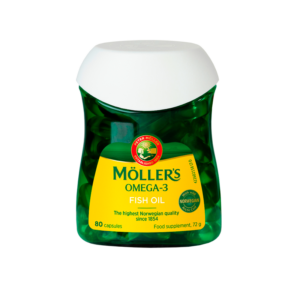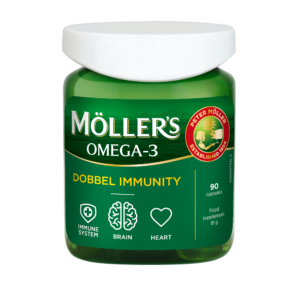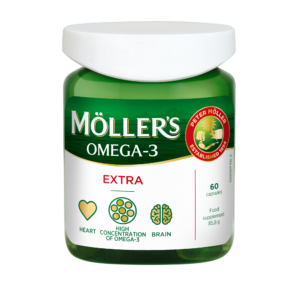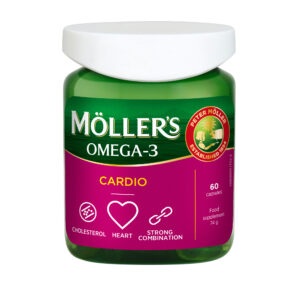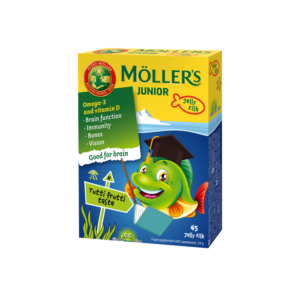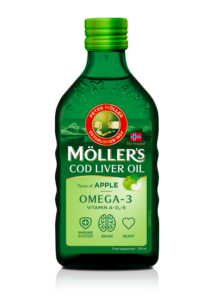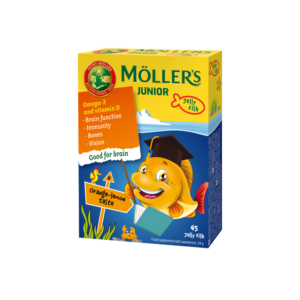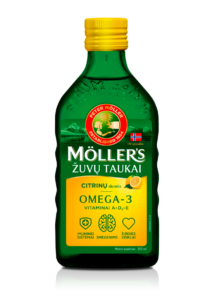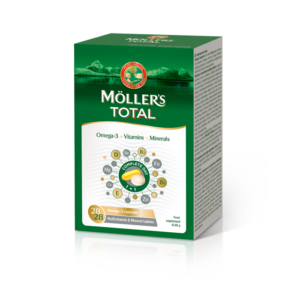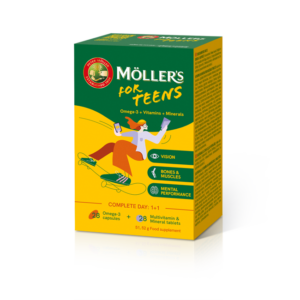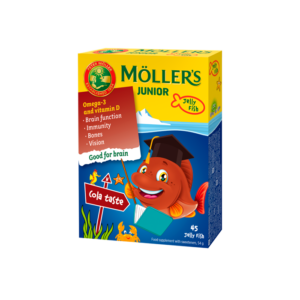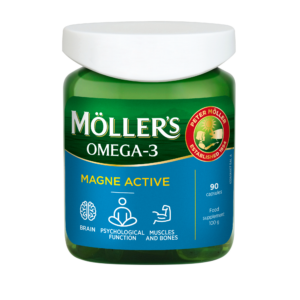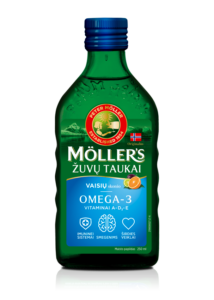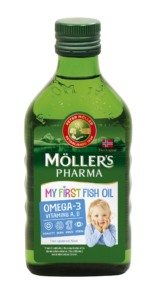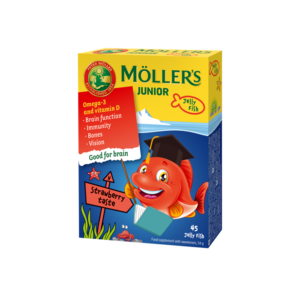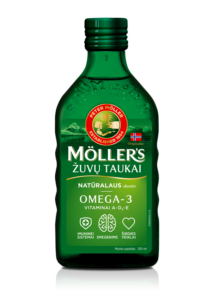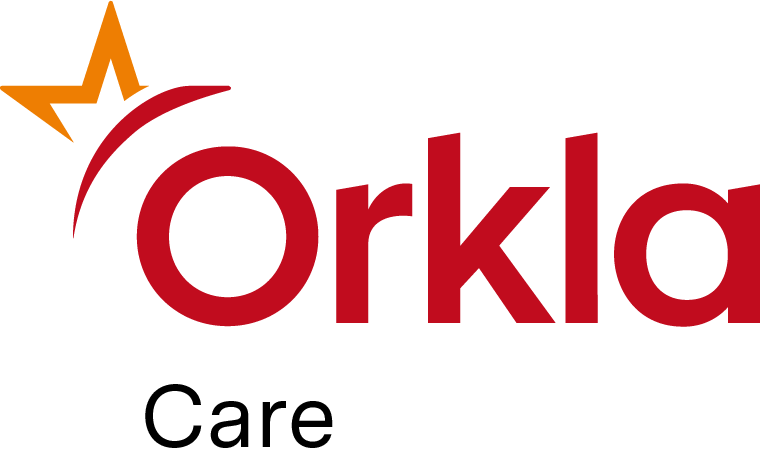Seniai įrodyta, kad motinos pienas turi kūdikio sveikatai būtinų maisto medžiagų. O ar žinote, kad motinos vartojamos polinesočiosios riebalų rūgštys omega-3 naudingos žindomų kūdikių regos ir smegenų vystymuisi.
Home » Kodėl maitinant krūtimi reikia omega-3?
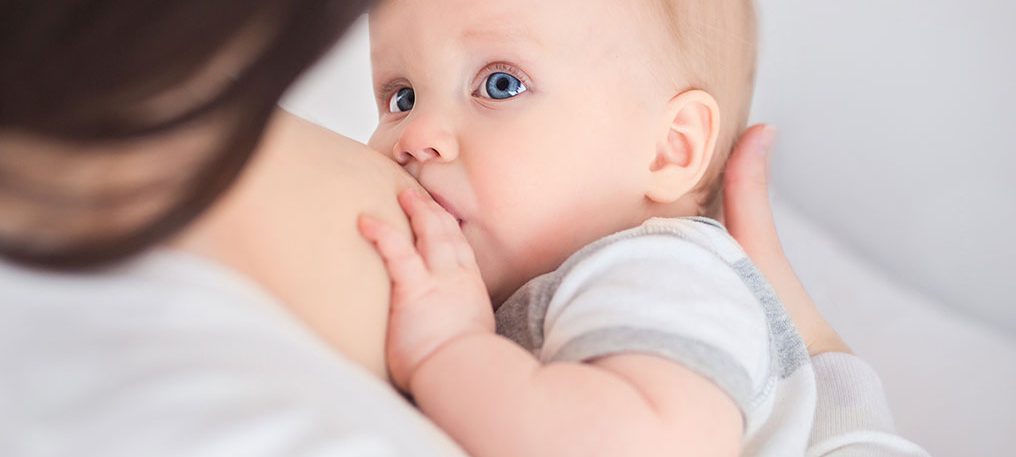
Vos tapus tėvais atsakomybės už naują gyvybę našta gali pasirodyti sunkiai pakeliama. Dažnas baiminasi, kad nesusidoros ar pridarys vaiko priežiūros ir auginimo klaidų. Tai visiškai normalus nerimas, kurio priežastis – paprasti klausimai: kodėl kūdikis nuolat verkia, kaip jį užmigdyti, ar jis tinkamai vystosi?
Atminkite, panika praeina, o kūdikiai dažniausiai auga sveiki.
Didžiausia laimė, kad dauguma motinų gali nesukti galvos, kuo maitinti naujagimį. Gamta turi optimalų sprendimą – motinos pieną. Štai kodėl privalote būti tikra, kad, kol maitinate krūtimi, valgote tai, ko reikia jums ir jūsų kūdikiui.
Pasak sveikatos specialistų, maistinę motinos pieno sudėtį įtakoja mamos suvartotas maistas. Motinos mityba turi būti sudaryta taip, kad teiktų pakankamai energijos pieno gamybai ir maistinių medžiagų sau ir maitinamam kūdikiui. Tie patys sveikos mitybos patarimai galioja kiekvienam žmogui, o maitinančios mamos – ne išimtis. Tačiau yra keli svarbūs niuansai.
Ypatingą dėmesį reikia atkreipti į papildomą omega-3 riebalų rūgščių vartojimą. Omega-3 sudėtyje yra riebalų rūgšties DHR, kuri naudinga normaliam vaisiaus ir žindomų kūdikių regos bei smegenų vystymuisi. Teigiamas poveikis atsiranda per parą suvartojant 200 mg DHR kartu su suaugusiesiems per parą rekomenduojamu suvartoti omega–3 riebalų rūgščių kiekiu, t. y. 250 mg DHR ir EPR.
Smegenys ir rega sparčiausiai vystosi pirmaisiais metais, todėl labai svarbu, kad būtent šiuo laikotarpiu kūdikis gautų pakankamai omega-3 riebalų rūgščių. Tik pagalvokite, kiek įvairiausių dalykų mažyliui teks išmokti, kiek kartų jam reikės pažvelgti į supantį pasaulį pirmą kartą.
Riebi jūrinė žuvis taip pat yra svarbus vitamino D šaltinis, tačiau sunku gauti kokybiškos šviežios jūrų žuvies. Todėl reiktų reguliariai vartoti kokybiškus žuvų taukus, taip padidinant vitamino D kiekį motinos piene.
Viename arbatiniame „Möller‘s“ žuvų taukų šaukštelyje yra net 600 mg riebalų rūgšties DHR, kuri rekomenduojama nėščiosioms ir krūtimi maitinančioms moterims.
Motinystė – tikras stebuklas, nors ir įnešantis į gyvenimą gausybę naujų rūpesčių. Tik nepamirškite, kad 99 proc. baimių niekada nepasiteisina, o svarbiausia vadovautis sveiku protu ir apgaubti savo vaiką kuo didesne meile.
What is good health?
Do you have a good lifestyle?
Lifestyle simply means the way in which you live. Health and lifestyle go hand in hand. You might feel you have a good lifestyle if you are physically active, eat healthily and generally experience a sense of wellbeing. Conversely, if you want good health you should also have a good lifestyle.
Physical activity is the major contributor to a good lifestyle, but diet, drugs, stress, sleep and social conditions are also play an important role. Being able to use the body properly to avoid injury also affects lifestyle. Physical activity can also prevent depression and help you to recover more quickly from mental illness, both of which obviously affect your lifestyle.
Diet can be a difficult topic for many. Perhaps you eat too much or too little or maybe you find it hard to know what foods to combine to have a balanced diet. It’s also important to eat food that contains important vitamins, minerals and dietary fibre, omega-3 and antioxidants. On top of all this, you also need to get enough energy, protein and the correct fatty acids. The requirement for these nutrients changes throughout your life. When you are older you also have different requirements than children and younger adults. Women also have different requirements than men. Pregnant and breastfeeding mothers also have special requirements.
When you get older, you lose muscle mass and your body requires less energy and therefore less food. You may lead a less active life than you did before, which is why you require less food. However, your need for minerals, vitamins and other nutrients remains the same. Of course, there are plenty of healthy and active older people, but when you reach 70 to 80 years of age, it’s easier to become ill, especially during flu season.
Some steps you can take to improve your lifestyle and health are to:
- eat a healthy and varied diet
- stay active
- watch your weight
- avoid too much alcohol and don’t smoke
- get enough sleep
- think positive
- practise good hygiene
What is good quality of life?
The World Health Organisation (WHO) defines quality of life as a state where the individual can realise their potential, cope with normal stressful situations, work in a rewarding and positive way, and be able to contribute to others and society.
Quality of life is a wide and somewhat diffuse concept that includes joy in, and a desire for, life. These are values that are rather felt than measured, which in turn are based on personal environment and choices. Quality of life doesn’t necessarily depend on being healthy or sick. It’s the moments between worries, sorrows, problems and ailments that matter. For example, if you have a chronic illness, a feeling of mastery can be important when talking about quality of life.
To sum up, quality of life is a combination of health, lifestyle, networks and social support. It’s about experiencing joy, meaning in life, satisfaction, security and a sense of belonging, as well as being able to use your strengths. It’s also about feeling interest in life, coping with everyday situations and a being committed to something or someone. If you have good quality of life, you will be able to cope better with the inevitable stressful situations in life.
Produktai:
-
Möller‘s žuvų taukai, 80 kapsulių
-
Möller‘s Dobbel Immunity, vanilės skonio, 90 kapsulių
-
Möller‘s Omega-3 Extra, 60 kapsulės
„Möller’s Omega-3 Ekstra“ – atnaujintos dar didesnės koncentracijos natūralios žuvinės kilmės omega-3!
-
Möller‘s Omega-3 Cardio, 60 kapsulės
-
Möller’s Strong D Vitamin, 60 kapsulių
-
Möller’s Junior Omega-3, vaisių skonio, 45 kramtomos žuvelės
-
Möller’s žuvų taukai, obuolių skonio, 250ml
-
Möller’s Junior Omega-3, apelsinų ir citrinų skonio, 45 kramtomos žuvelės
-
Möller‘s citrinų skonio žuvų taukai, 250 ml
-
Möller‘s Total – Omega-3, vitaminų ir mineralų kompleksas, 28 kapsulės ir 28 tabletės
-
„Möller‘s for Teens“ omega-3 ir vitaminų bei mineralų kompleksas paaugliams, 28 kaps x 28 tabl
-
Möller’s Junior Omega-3, kolos skonio, 45 kramtomos žuvelės
Kramtomos kolos skonio žuvelės su omega-3 ir vitaminu D3. Švelnios ir minkštos tekstūros maisto papildai visavertei vaikų mitybai.
-
Möller‘s Omega-3 Magne Active, 90 kapsulių
-
Möller‘s žuvų taukai, vaisių skonio, 250 ml
-
Möller‘s mano pirmieji žuvų taukai, 250 ml
-
Möller’s Junior Omega-3, braškių skonio, 45 kramtomos žuvelės
-
Möller‘s žuvų taukai, natūralaus skonio, 250 ml
„Möller’s“ skysti žuvų taukai – tradicinis būdas pasirūpinti savimi!
Sužinoti daugiau
Padėkite, aš močiutė!
sveiki kaulai vyresniems
Laukiatės vaikelio? Omega-3 riebalų rūgštys jums ypač svarbios
smegenys vyresniems
Koks ryšys tarp sveikos gyvensenos ir gyvenimo kokybės?
menkių kepenų aliejus vyresniems
Pasisemkite įkvėpimo mūsų Instagram
This error message is only visible to WordPress admins
Error: Access Token is not valid or has expired. Feed will not update.
